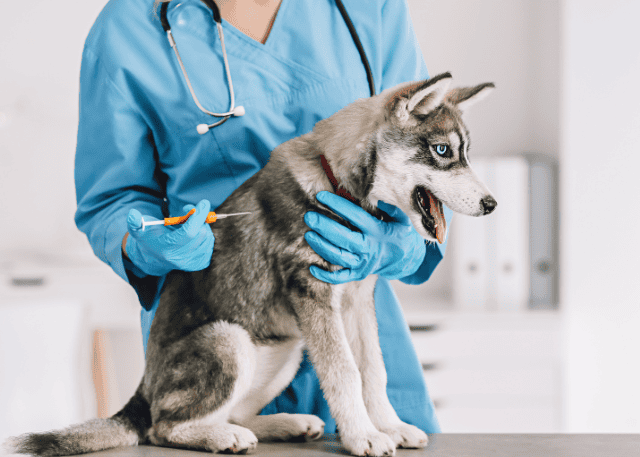Microchipping Our Pets – What It Is & Why It Matters
August 11, 2025 –
Keeping pets safe is every pet owner’s top priority—and microchipping is a simple, effective way to increase the chances of reuniting with your furry friend should they become lost.
A microchip is a tiny electronic device (about the size of a grain of rice) that’s implanted just beneath your pet’s skin, usually between the shoulder blades. It’s a quick procedure, similar to a routine vaccination, and it provides lifelong identification without the need for surgery, batteries, or maintenance.
Each chip contains a unique ID number linked to your contact information in a secure registry. When a lost pet is taken to a veterinary clinic or animal shelter, staff use a handheld scanner to check for a chip. If one is found—and it’s registered with up-to-date information—you can be contacted and reunited with your pet much faster.
Keep in mind: Microchips are not GPS trackers. They won’t show your pet’s location, but they can prove ownership and provide contact information.
According to the American Animal Hospital Association (AAHA), pets with microchips are dramatically more likely to be returned home. In one study, dogs with microchips were reunited more than twice as often as those without, and the rate for cats was even higher.

Getting Started with Microchipping
If you’ve adopted a dog or cat from NOCO Humane, great news—they’re already microchipped! For pets that aren’t chipped yet, NOCO Humane offers microchipping and registration for just $40. If you would like to have your pet chipped at NOCO Humane, give our Client Services a call at 970.226.3647 ext. 0 for our Larimer Campus, and 970.506.9550 ext. 0 for our Weld Campus. You can also have this done during a routine visit with your veterinarian.
Microchipping Benefits
Microchipping is one of the most effective ways to protect your pet. A registered microchip greatly increases the chances of a reunion if your pet is ever lost—providing a permanent form of identification that can’t be removed or lost like a collar. It also helps prevent ownership disputes and offers peace of mind during emergencies or natural disasters.
While microchips are a powerful safety net, they should never replace visible ID tags or proper pet licensing. And remember, your microchip is only as effective as the contact information linked to it – be sure to keep those details up to date. We recommend scanning your pet’s chip at least once a year to ensure it works properly and displays the correct information.
This quick and simple step can make all the difference. It’s about more than the technology—it’s about giving our pets the best chance to find their way back home.





